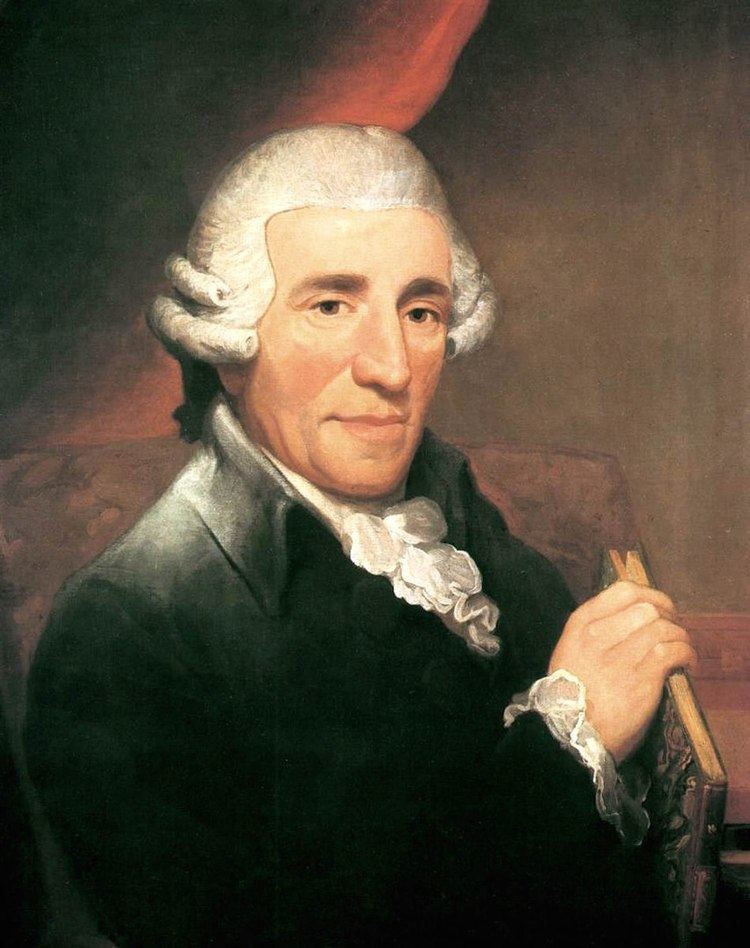 | ||
The Symphony No. 96 in D major, Hoboken I/96, was completed by Joseph Haydn in 1791 as part of the set of symphonies composed on his first trip to London. It was first performed at the Hanover Square Rooms in London on 11 March 1791. Although it is the fourth of the twelve London Symphonies (numbers 93–104) by number, it was actually the first one written and performed. It is popularly known as the Miracle Symphony.
Contents
Nickname (the Miracle)
It is so called due to the story that, during its premiere, a chandelier fell from the ceiling of the concert hall in which it was performed. The audience managed to dodge the chandelier successfully as they had all crowded to the front for the post-performance applause, and the symphony got its nickname. More careful and recent research suggests that this event did indeed take place but during the premiere of his Symphony No. 102.
Movements
The work is in standard four movement form and scored for two flutes, two oboes, two bassoons, two horns, two trumpets, timpani and strings.
- Adagio, 3
4 – Allegro, 3
4 - Andante, 6
8 in G major - Menuetto: Allegretto, 3
4 - Finale: Vivace, 2
4
The first movement is in sonata form. Following a slow introduction, the first theme of the exposition is actually two overlapping themes, a short–short–short–long repeated-note theme in the first violins over a falling motif in the middle strings and bassoons. Following a brief transitional section, the first theme returns giving the opening section a ternary structure. The first theme group closes with fanfares featuring repeated notes. What follows is a more extended transition featuring three repeated eighth-notes as in the opening of the Allegro. There is no true second theme group making this a P-T-K exposition. The expositional coda also features motifs containing three eighth notes. The development can be divided into three sections. The first section develops the exposition's first theme and the second develops themes from the expositional coda. Both of these sections touch on the relative minor, B minor. Following a two-measure grand pause, the third section opens with a false recapitulation of the exposition in the wrong key of G major which quickly collapses into more development of the first theme. When the recapitulation arrives, it proceeds quickly. Following another transition, the fanfares from the first theme group return building up to an unexpected stormy climax in D minor leaving just seven measures of D major to bring the movement to a close.
The slow movement in G major is in ternary form (ABA) featuring a lightly scored, lilting theme with three upbeats. The central "B" section of the movement is for full tutti in G minor and is highly contrapuntal. The second "A" section finishes suspended on a cadential six-four chord. The following coda is indeed an orchestral cadenza featuring solos from the two principal violinists (including Salomon) and solos from the principal winds as well.
The trio of the minuet features an extended oboe solo.
